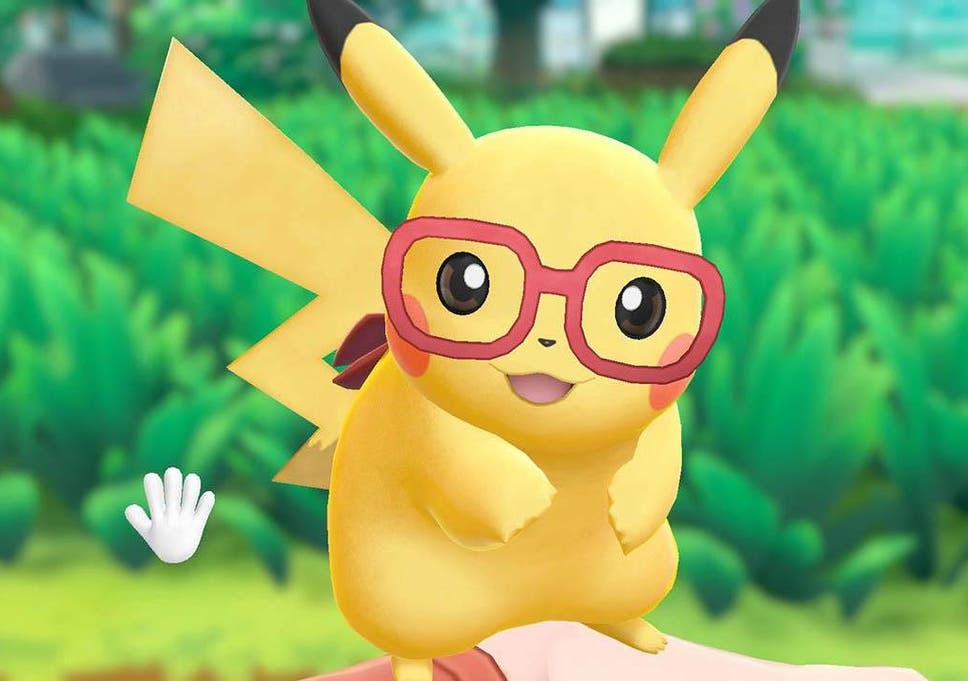
When Nintendo announced Pokémon Let’s Go Eevee and Pikachu, fans of the series were left puzzled. Are these games - which heavily borrow mechanics from the world-conquering phone game Pokémon Go - a soulless cash-grab? Or are they actually a much-needed remix to the tried, tested and tired formula that has been repackaged a dozen times since debuting on Game Boy in 1996?
With the Elite Four under my belt, I can confirm that, while the beloved games company may capitalise on Pokémon Go’s success, these new games certainly have soul – and a lot of it.
Let’s Go is a re-imagining of the series’ most beloved instalment, Yellow. Sure, Professor Oak sets players that same mission to master all eight gyms and catch all 151 Pokémon, enough has changed that Let’s Go feels very different.
Controversially, wild Pokémon encounters are now a thing of the past, replaced by the Pokémon Go-like system which sees players throw Pokéballs and berries at creatures rather than battle them. Gone is the randomness, as you can see each Pokémon walking around.
Gone, too, are HMs (those moves you were forced to teach Pokémon that could only be removed by a “move delete”), replaced by special techniques that - depending on the version you choose - Eevee or Pikachu learns. Your chosen ally, meanwhile, remains atop your head at all times, even if not a member of your battling party.
Speaking of your party, computers where you once stored Pokémon are gone. Instead, you carry around all your pocket monsters at all times – but, as standard for the series, only six can be used for battle. And yes, battles are still around. They are, however, limited to just being against trainers (and the occasional legendary bird/Snorlax).
On top of that, the story has been (minutely) tweaked, the Safari Zone has gone (replaced by a Pokémon Go tie-in park) and the game has been given a beautiful 3-D make-over (it’s amazing how different things look in 3-D to how you imagine them).
With all these changes in mind, I must admit that I was left hugely unimpressed by the first few hours. Discovering each new feature felt like Game Freak using “dream eater” on my nostalgia. Most disheartening of all, the game felt easy – especially when compared to the challenging originals. (My annoyance peaked when it became apparent you could a catch Bellsprout before taking on first gym leader Brock, making his Onix and Geodude a breeze.)
Thankfully, soon enough, these fears subsided. While initially I wanted to avoid wild Pokémon encounters like the plague, they proved necessary to progressing. And when I embraced these Pokémon Go-esque encounters, something clicked. This was actually fun – more fun than grinding Digletts to evolve a Squirtle.
Throwing Pokéballs (which sees you throw the Joy-Con like a Pokéball) requires less skill than battles but does demand a certain knack. Seeing Pokémon wandering around means you’re more inclined to avoid annoying Zubat and actually find Kangaskhan.
Hand-in-hand with having all these Pokémon at your disposal – thanks to the new computer system – you I found myself playing around with a more diverse team than ever before.
These changes also mean that, for the first time since Gold/Silver, catching them all feels very possible. And with only 151 to actually catch, plus the ability to bring aboard your Pokémon Go collection, it no longer seems like an almost insurmountable mountain to climb.
Of course, there are multiple things that can also make your experience much easier. At any moment, even midway through a battle, a friend can join you – so battles become two-on-one. The ability to bring your catches from Pokémon Go makes the climb to 151 much easier. However, these are optional. Should you choose to play through the game without help, and without Pokémon Go, you’re looking at a game harder than the recent Sun and Moon instalments.
There are still other low points; on occasion, Team Rocket encounters go on too long. There are too many Rattata. You are given the main trio (Bulbasaur, Squirtle and Charmander) too early on. If you have Eevee (like me) and dislike Eevee (like me) you’re going to be infuriated by how much Eevee there is (and how you can’t evolve him/her).
Remarkably, though, Let’s Go Eevee and Pikachu manages to remix the worn formula without breaking it, serving up a nostalgic game that feels like classic Pokémon. Here’s hoping the next core Switch game builds on this for a completely fresh adventure.







